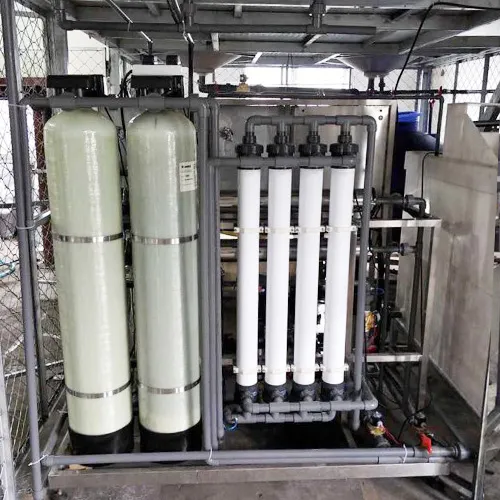loading...
- No. 9, Xingyuan South Street, Dongwaihuan Road, Zaoqiang County, Hengshui, Hebei, China
- admin@zjcomposites.com
- +86 15097380338
- Welcome to visit our website!
waste water treatment equipment
Wastewater Treatment Equipment An Essential Component of Environmental Sustainability
Wastewater treatment is a crucial process in managing water resources and ensuring environmental sustainability. With the increasing global population and accelerated industrial activities, the volume of wastewater generated has reached alarming levels. Effective wastewater treatment equipment plays a vital role in the purification of water, thereby protecting ecosystems and human health. This article will explore the various types of wastewater treatment equipment, their functions, and their significance in modern society.
Understanding Wastewater Treatment
Wastewater refers to any water that has been affected by human use, including domestic, industrial, agricultural, and stormwater runoff. The treatment of this water is essential to remove contaminants before it is released back into the environment or reused. The process typically involves physical, chemical, and biological methods to treat the wastewater and is often divided into several stages primary, secondary, and tertiary treatment.
Types of Wastewater Treatment Equipment
1. Screens and Grates These are the first line of defense in wastewater treatment plants. Screens and grates are used to remove large solids and debris from incoming wastewater. This equipment prevents damage to downstream equipment and ensures the efficiency of subsequent treatment processes.
2. Sedimentation Tanks Also known as clarifiers, sedimentation tanks utilize gravity to settle out heavier solids from the wastewater. The settled solids, known as sludge, are removed and treated separately. This process is vital in reducing the overall load of contaminants in the water.
3. Aeration Tanks In secondary treatment, aeration tanks introduce air into the wastewater, promoting the growth of microorganisms that break down organic matter. This biological process is highly effective, as these microorganisms consume the pollutants, thus purifying the water.
4. Activated Sludge Systems This system is an extension of aeration tanks, where a mixture of water and activated sludge is aerated to promote microbial growth. After aeration, the mixture moves to a secondary clarifier where the biomass is settled out. Some of the settled sludge is returned to the aeration tank, maintaining a constant population of microorganisms.
waste water treatment equipment

5. Membrane Filtration Advanced treatment technologies, such as membrane filtration, are increasingly being used to produce high-quality effluent. This process uses semi-permeable membranes to remove dissolved solids, bacteria, and viruses. Membrane bioreactors (MBR) combine biological treatment and membrane filtration, providing an efficient solution for wastewater treatment.
6. Chemical Treatment Systems Chemical dosing systems are essential for removing specific contaminants in wastewater, such as heavy metals, pharmaceuticals, and nutrients like nitrogen and phosphorus. Coagulation and flocculation processes help in precipitating these impurities for easy removal.
7. Disinfection Units To further ensure the safety of treated wastewater, disinfection methods such as chlorination, ultraviolet (UV) light, or ozone treatment are employed. This step is crucial for eliminating pathogens before the water is released back into the environment or reused.
The Significance of Wastewater Treatment Equipment
Investing in modern wastewater treatment equipment is imperative for several reasons. Firstly, it helps safeguard public health by preventing the spread of waterborne diseases. Secondly, it protects aquatic ecosystems by ensuring that discharged water meets environmental standards. Thirdly, treated wastewater can be reused for various purposes, such as irrigation, industrial processes, and even potable water supply in certain contexts, thus promoting water conservation.
Moreover, efficient wastewater treatment processes contribute to the circular economy by recovering valuable resources. For instance, biogas generated during the anaerobic digestion of sludge can be harnessed for energy production, while treated effluent can be utilized for agricultural irrigation, reducing the need for freshwater.
Conclusion
In conclusion, wastewater treatment equipment is an indispensable part of contemporary society’s efforts to manage and recycle water resources effectively. The advancement of technology in this field promises not only to improve the efficiency of wastewater treatment processes but also to contribute to global sustainability initiatives. As the challenges of water scarcity and pollution grow, investing in and upgrading wastewater treatment equipment will be essential for safeguarding both public health and the environment.
-
The Rise of FRP Profiles: Strong, Lightweight, and Built to LastNewsJul.14,2025
-
SMC Panel Tanks: A Modern Water Storage Solution for All EnvironmentsNewsJul.14,2025
-
GRP Grating: A Modern Solution for Safe and Durable Access SystemsNewsJul.14,2025
-
Galvanized Steel Water Tanks: Durable, Reliable, and Ready for UseNewsJul.14,2025
-
FRP Mini Mesh Grating: The Safer, Smarter Flooring SolutionNewsJul.14,2025
-
Exploring FRP Vessels: Durable Solutions for Modern Fluid HandlingNewsJul.14,2025
-
GRP Structures: The Future of Lightweight, High-Performance EngineeringNewsJun.20,2025
